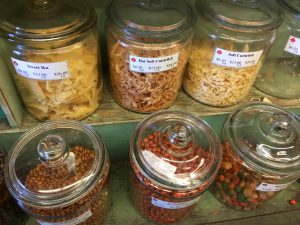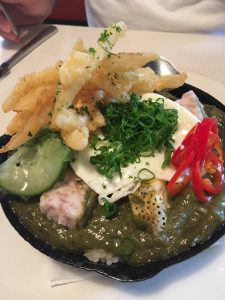 If I had to pick the perfect Sri Lankan meal, this would be it. There’s nothing like breaking off a crisp piece of hopper, dipping it into broken egg, and scooping up some curry and a bit of seeni sambol. Delectable.
If I had to pick the perfect Sri Lankan meal, this would be it. There’s nothing like breaking off a crisp piece of hopper, dipping it into broken egg, and scooping up some curry and a bit of seeni sambol. Delectable.
These rice flour pancakes have a unique shape; fermented batter is swirled in a special small hemispherical pan, so you end up with a soft, spongy center, and lacey, crispy sides — that contrast is the true glory of the hopper. Typically you’d make one egg hopper per person, plus another plain hopper or two, and maybe a sweet hopper to finish up.

If you don’t have a hopper pan, you can make hoppers in a regular frying pan; you just won’t get quite as much of the crispy sides. It’s a little time-consuming to make hoppers, since each one must be individually steamed for a few minutes, but with practice, you can have four hopper pans going on a stove at once. I’d recommend starting with just one pan at a time, though! Serve with curry and seeni sambol.
2 cups South Asian white or red rice flour (or a mix of rice and wheat flour)
1 tsp sugar
pinch of baking powder
1/2 tsp salt
2 cups coconut milk
eggs for egg hoppers
extra coconut milk and jaggery for sweet hoppers
1. Mix first five ingredients thoroughly in a large bowl, cover, and set in a warm, turned-off oven to ferment overnight. (In a cold climate, fermentation may not occur without a little help—I turn my oven on to 250 degrees, and when it’s reached temperature, turn it off and put the covered bowl in the oven to stay warm.)
2. Mix again, adding water if necessary to make a quite thin, pourable batter.
3. Heat pan (grease if not non-stick) on medium, and when it’s hot, pour about 1/3 cup batter into the center. Pick up the pan immediately and swirl the batter around, coating the cooking surface. The sides of the hopper should end up with holes in them: thin, lacy, and crisp – if the batter is coating the pan more thickly, mix in some hot water to thin it down. Cover and let cook for 2-4 minutes — you’ll know it’s ready when the sides have started to brown and the center is thoroughly cooked. A silicone spatula will help with getting the hopper out of the pan.

4. For egg hoppers, after swirling, crack an egg in the center before covering. The egg will cook as the hopper does, finishing in about 3-4 minutes.


5. For sweet hoppers, after swirling, add a tablespoon of coconut milk and a teaspoon of jaggery to the center of the pan, then cook as usual.
If you don’t use all the batter right away, you can store it in the fridge, but it will keep rising, so make sure there’s some room in your storage container for that, and then you’ll want to thin it back down to pouring consistency with another 1/4 – 1/2 c. of water before use.
NOTE: If you use instant hopper mix, I found that a packet (about 3 cups of mix) used 2 cans of coconut milk plus 2 – 2 1/2 cups of water.

 This was a fun one for me — an entirely vegan dinner, that I did for last week’s board game night. Pretty easy with Sri Lankan food. Going around clockwise: lentils in coconut milk (tons of protein), carrot in coconut milk, kale sambol, coconut sambol (spicy), seeni sambol (spicy and sweet), eggplant curried in coconut milk, with red rice / quinoa in the center.
This was a fun one for me — an entirely vegan dinner, that I did for last week’s board game night. Pretty easy with Sri Lankan food. Going around clockwise: lentils in coconut milk (tons of protein), carrot in coconut milk, kale sambol, coconut sambol (spicy), seeni sambol (spicy and sweet), eggplant curried in coconut milk, with red rice / quinoa in the center.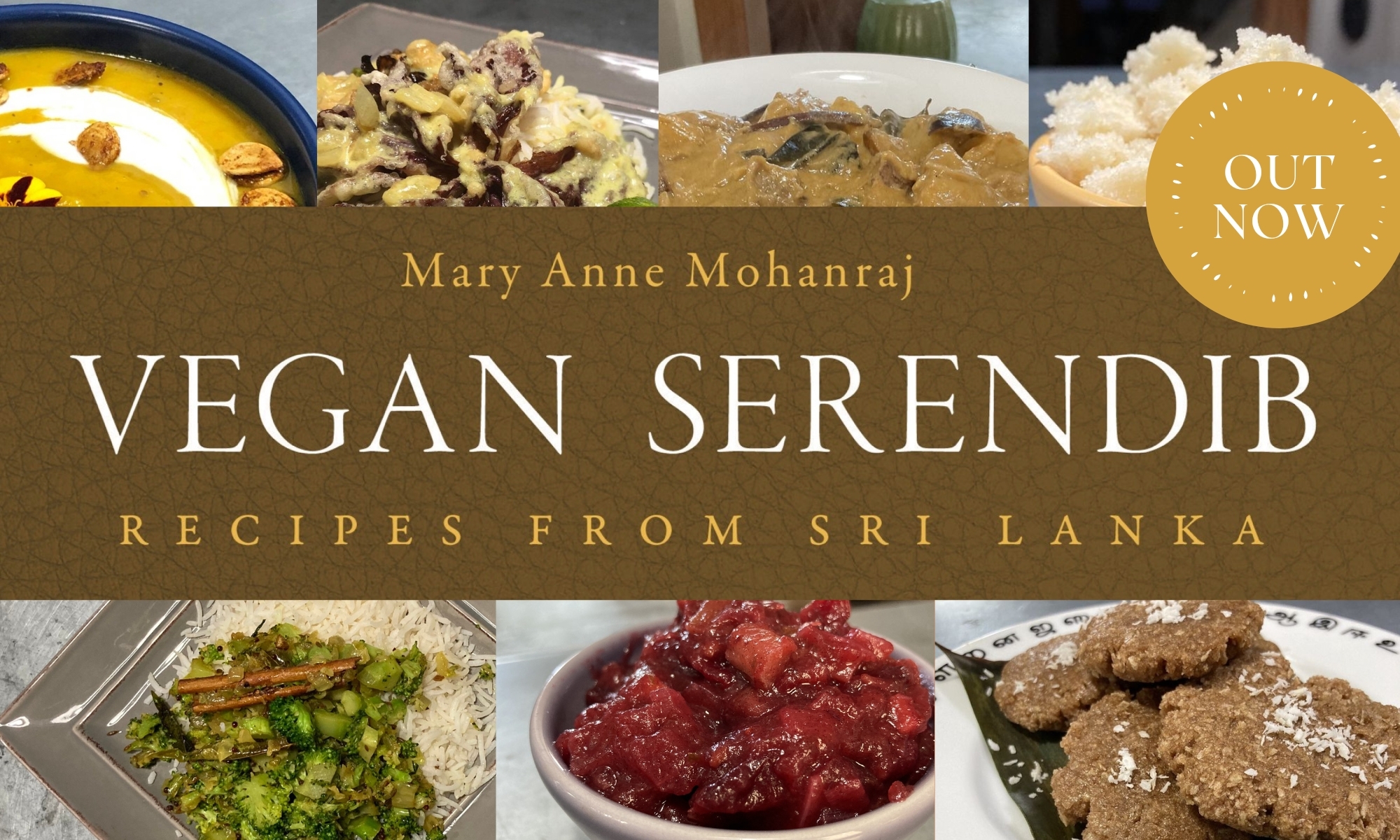
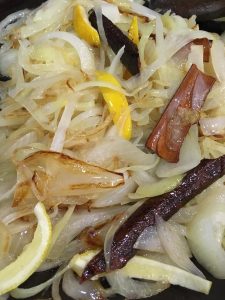 (60 minutes, serves six)
(60 minutes, serves six)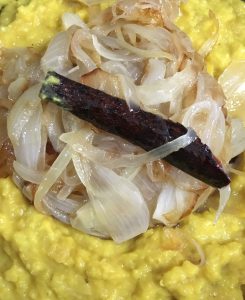
 (20 minutes, serves 4)
(20 minutes, serves 4)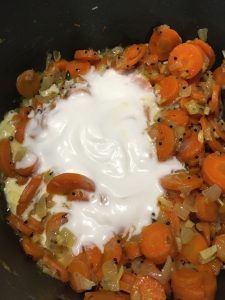
 This may be the most iconic flavor combo of my childhood — beef curry with carrot curry on rice. I think my mom made it close to weekly, and the two flavors go perfectly together — the savory spice of the beef with the sweetness of the carrots cooked in coconut milk.
This may be the most iconic flavor combo of my childhood — beef curry with carrot curry on rice. I think my mom made it close to weekly, and the two flavors go perfectly together — the savory spice of the beef with the sweetness of the carrots cooked in coconut milk.







